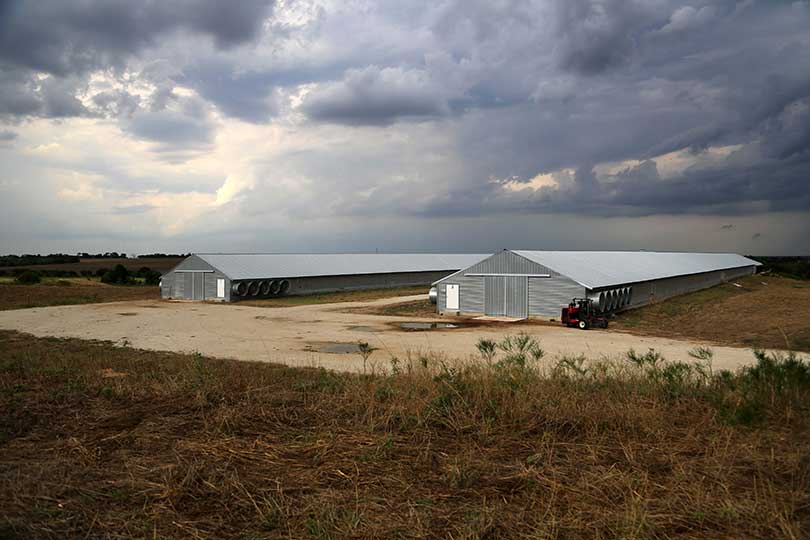By Emmy Powell
Communications Specialist
Since February 2022, Highly Pathogenic Avian Influenza (HPAI) has affected nearly 175 million poultry and 1,075 dairy herds across the U.S.
While detections have slowed over the summer, with just one poultry and one dairy herd case in the last 30 days, Bernt Nelson, an economist with the American Farm Bureau Federation (AFBF), said fall migration could trigger new outbreaks.
“Migratory birds moving south along flyways are the most likely to spread HPAI, which survives better in cool conditions, making fall a likely time for HPAI flare-ups,” Nelson said.
HPAI has been detected 1,710 times in poultry across 50 states, with egg layers and turkeys hit hardest due to their proximity to major flyways.
More than 130 million commercial egg-laying hens, about 75% of all birds lost, have been affected.
“This significantly reduced the supply of eggs, especially for states that only allow the sale of eggs from cage free production practices, causing egg prices to rise to record levels on several different occasions from 2022-2025,” Nelson said. “The slowdown in HPAI detections over the summer allowed egg prices to decline.”
The national average retail price for a dozen eggs in July was $3.59 per dozen, down 40% from the record of $6.22 per dozen set in March of this year.
USDA’s Chickens and Eggs report estimates egg-type chicks hatched in July totaled 58.2 million, up 4% from July 2024. Eggs in incubators were 56.2 million, up 9% from last year.
This indicates that the egg industry is recovering, he said.
“It’s important to note that a single detection on a large operation can have big impacts. This is another reason why egg prices are particularly vulnerable to detections of HPAI,” Nelson said.
Turkeys are the second-most affected species, with over 18 million lost since 2022, accounting for about 10% of all poultry birds in this outbreak.
The number of turkeys raised has fallen dramatically over the last 15-20 years, dropping by 25% from 275 million in 2008 to just 205 million turkeys in 2024.
Nelson noted fewer turkeys raised means the industry is more vulnerable to HPAI and other diseases, like avian metapneumovirus.
Broilers have seen fewer losses to HPAI, losing 13.2 million birds, or 7% of the total birds affected by HPAI since 2022.
“USDA projects broiler production will be 47.7 million pounds, up 1.6% from 2024. While higher weights are partially behind the increase, continued strength in broiler chick hatch numbers will provide a cushion if HPAI detections show up in broiler flocks this fall,” he said.
HPAI was first detected in dairy herds in March 2024. Since then, 1,075 herds in 18 states have tested positive, with California accounting for over 72% of cases.
“HPAI in dairy herds has also slowed over the summer months with only five dairy herds testing positive between June 1 and Aug. 28,” Nelson said. “The HPAI strain affecting dairy cattle is genetically different from the strain spread by wild birds. This strain mostly affects lactating dairy cattle.”
Most cattle recover after a couple of weeks and mortality rates are very low, with deaths occurring in only about 2% of affected cattle.
A Cornell study estimated losses at $950 per infected cow, even with recovery. To ease the strain, USDA began offering financial support in July 2024 through the Emergency Assistance for Livestock, Honeybees and Farm-Raised Fish Program. Nearly $390 million has been distributed to cover milk losses from affected herds.
In June, AFBF requested support for impacted dairy farmers from USDA. As a result, USDA is now providing financial assistance to eligible dairy farmers for any milk losses due to HPAI in dairy cattle.
Since USDA began accepting applications on July 1, 2024, over $390 million has been paid out to 989 processed applications through USDA’s Emergency Assistance for Livestock, Honeybees and Farm-Raised Fish Program (ELAP).


Leave A Comment